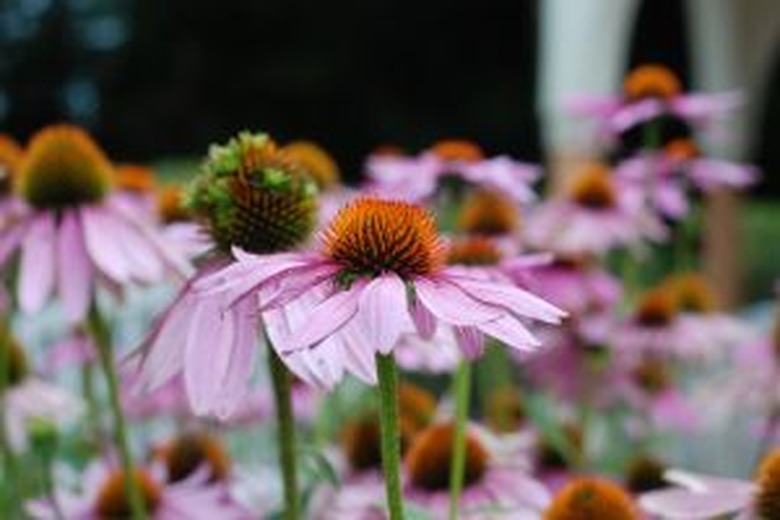How To Transplant Coneflowers
Things Needed
- Compost
- Tiller
- Fertilizer
- Spade
- Mulch
Tip
Plant shasta daisies or lantanas as companion plants with the coneflowers. Use purple coneflowers in wildlife gardens where they attract birds and butterflies.
Warning
Avoid overwatering; coneflowers prefer drier soil.
Echinacea, more commonly known as the purple coneflower, is a sun loving plant that produces attractive lavender blooms. The petals droop downward revealing a rust colored cone in the center. Often used in beds and borders, coneflower are simple to grow and require minimal maintenance. This perennial self seeds, so each year more coneflowers grace your garden. While it's possible to start from seed, most coneflowers are purchased as seedlings then transplanted into the garden after the danger of frost has passed.
Step 1
Pick a garden bed with full sun and well-drained soil for the coneflowers. Place 4 inches of compost on top and till it into the soil with a tiller or shovel.
- Echinacea, more commonly known as the purple coneflower, is a sun loving plant that produces attractive lavender blooms.
- While it's possible to start from seed, most coneflowers are purchased as seedlings then transplanted into the garden after the danger of frost has passed.
Step 2
Till fertilizer into the bed. Use a slow release 12-6-6 fertilizer, approximately 2 pounds per 100 square feet.
Step 3
Dig holes twice the diameter of the container the seedling is in. Space plants 3 feet apart.
Step 4
Grasp the plant around the stem right above the soil. Gently pull it from the container.
Step 5
Loosen the soil around the bottom of the root ball and set the plant in the hole so the top of the roots where the stem emerges is even with the soil. Fill the hole in with soil and gently pat it down.
- Till fertilizer into the bed.
- Grasp the plant around the stem right above the soil.
Step 6
Water the coneflowers thoroughly immediately after planting. From then on, water only during extended dry periods.
Step 7
Apply a 2-inch layer of organic mulch around the coneflowers to help retain moisture and keep the weeds down.
